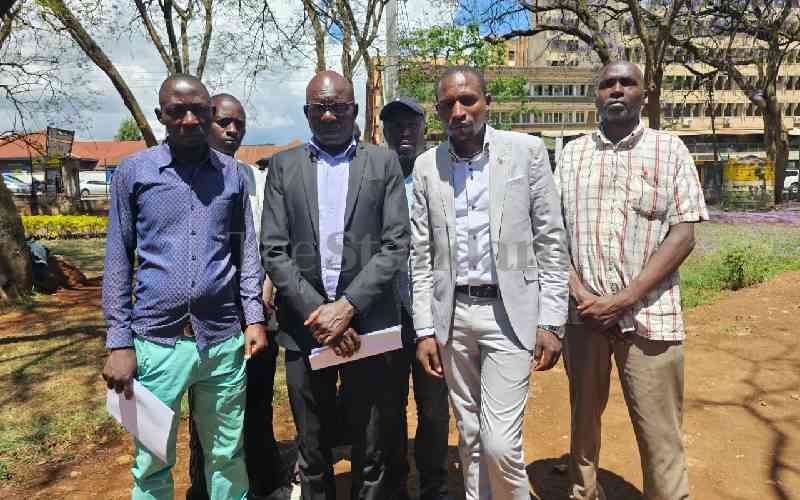
The Nairobi Metropolitan Service has suspended all development plans for two years in four informal settlements in Kibra Sub-county and declared it a special planning area.
Making the announcement yesterday, NMS Director General Mohammed Badi (pictured) said the move was aimed at preparing Sarangombe, Laini Saba, Makina and Lindi areas for a participatory, economically feasible, socially and environmentally sustainable Physical Development Plan in accordance with the provisions of Physical and Land Use Planning Act, 2019.
“Pursuant to the Deed of transfer of functions from the Nairobi City County Government to the National Government and in exercise of powers conferred by section 52 (1) of the Physical and Land Use Planning Act, 2019, the Nairobi City County Government declares the informal settlements of Sarangombe, Lindi, Makina and Laini Saba all within Kibra Constituency within Nairobi City County as a special planning area,” read the notice in part.
It also states that Ayany and Olympic estates in Sarangombe have been excluded in the development plan.
Maj-Gen Badi also noted that the declaration will facilitate formulation of harmonised standards and guidelines for buildings and other forms of development as defined under the Physical and Land Use Planning Act, 2019.
The plan will be a reference framework for developers and regulatory agencies with regard to development control processes and infrastructure provision within the planning area.
The declaration, Badi said, does not affect development permissions granted six months prior to the notice.
The NMS will also provide a map of the areas affected by the declaration, which will be posted at the County Government offices at City Hall, the Nairobi City County official website and the offices of the Ward Administrators of the respective wards for public viewing.
Kibra is now the second slum to be declared a special planning area in recent years. In 2018, the Nairobi County government froze development in Mukuru slums.
The then County Housing Executive, Patrick Odongo, said the move was implemented so that the county government doesn’t allow development that constrains the search for sustainable solutions to problems facing residents.
The Mukuru slum, comprising Mukuru kwa Njenga, Mukuru kwa Reuben and Viwandani, is one of the largest of the more than 150 informal settlements in Nairobi, covering 525 acres and with a population of more than 200,000 people.
Research presented by the International Development Research Centre in Nairobi shows that a robust informal economy often controlled by cartels generates at least Sh7 billion annually, equivalent to a quarter of the county government’s annual budget.
 The Standard Group Plc is a
multi-media organization with investments in media platforms spanning newspaper
print operations, television, radio broadcasting, digital and online services. The
Standard Group is recognized as a leading multi-media house in Kenya with a key
influence in matters of national and international interest.
The Standard Group Plc is a
multi-media organization with investments in media platforms spanning newspaper
print operations, television, radio broadcasting, digital and online services. The
Standard Group is recognized as a leading multi-media house in Kenya with a key
influence in matters of national and international interest.
 The Standard Group Plc is a
multi-media organization with investments in media platforms spanning newspaper
print operations, television, radio broadcasting, digital and online services. The
Standard Group is recognized as a leading multi-media house in Kenya with a key
influence in matters of national and international interest.
The Standard Group Plc is a
multi-media organization with investments in media platforms spanning newspaper
print operations, television, radio broadcasting, digital and online services. The
Standard Group is recognized as a leading multi-media house in Kenya with a key
influence in matters of national and international interest.






